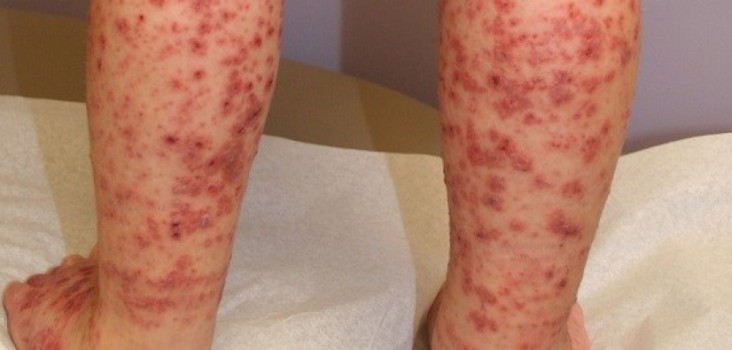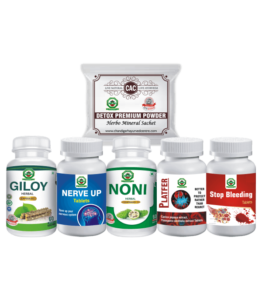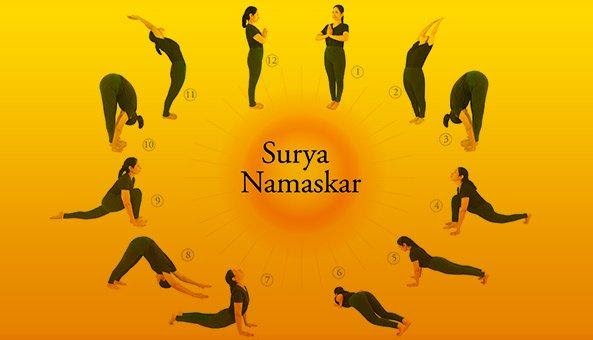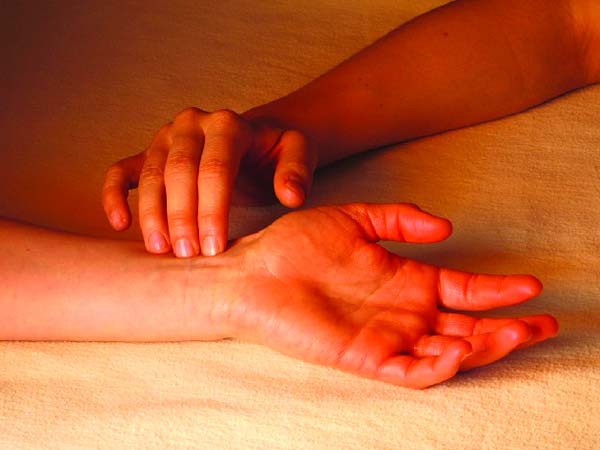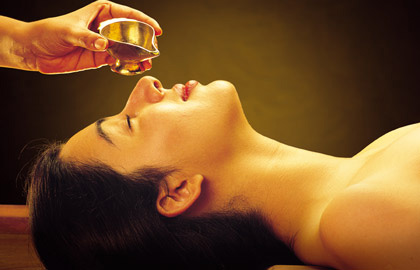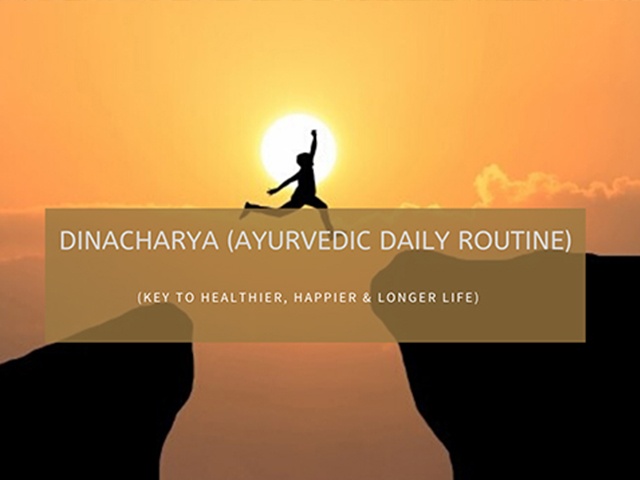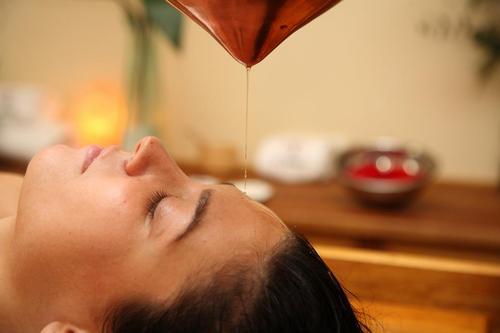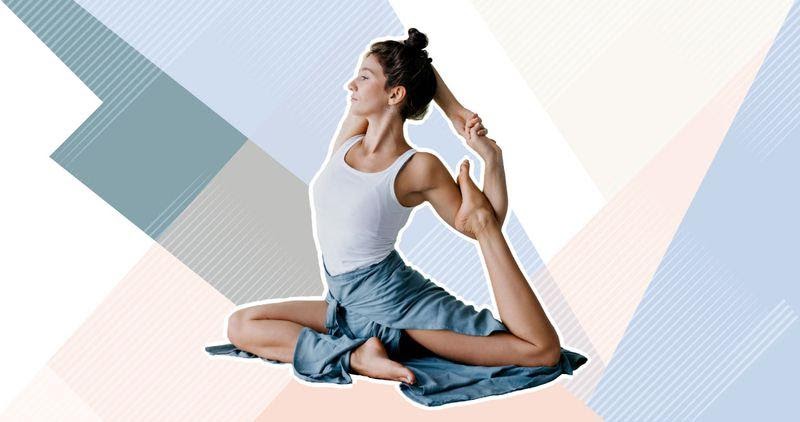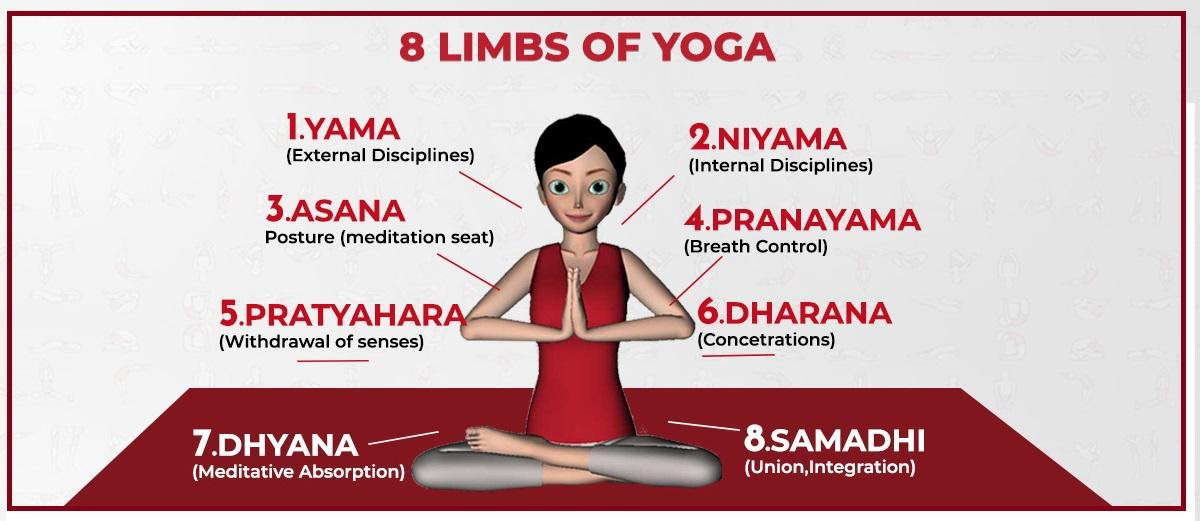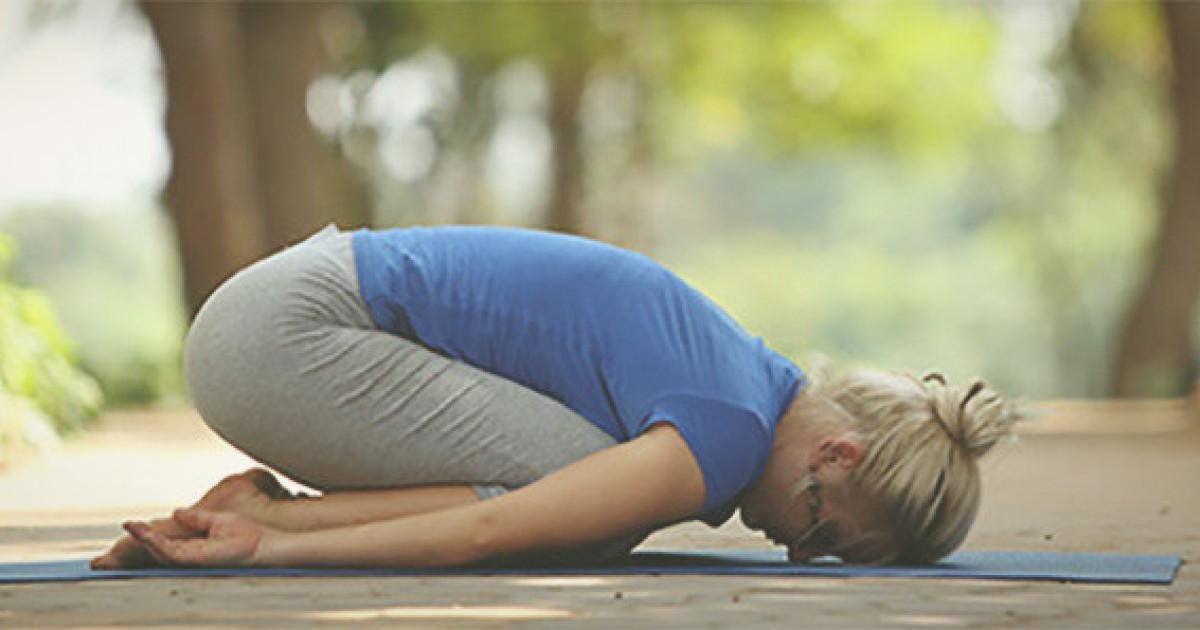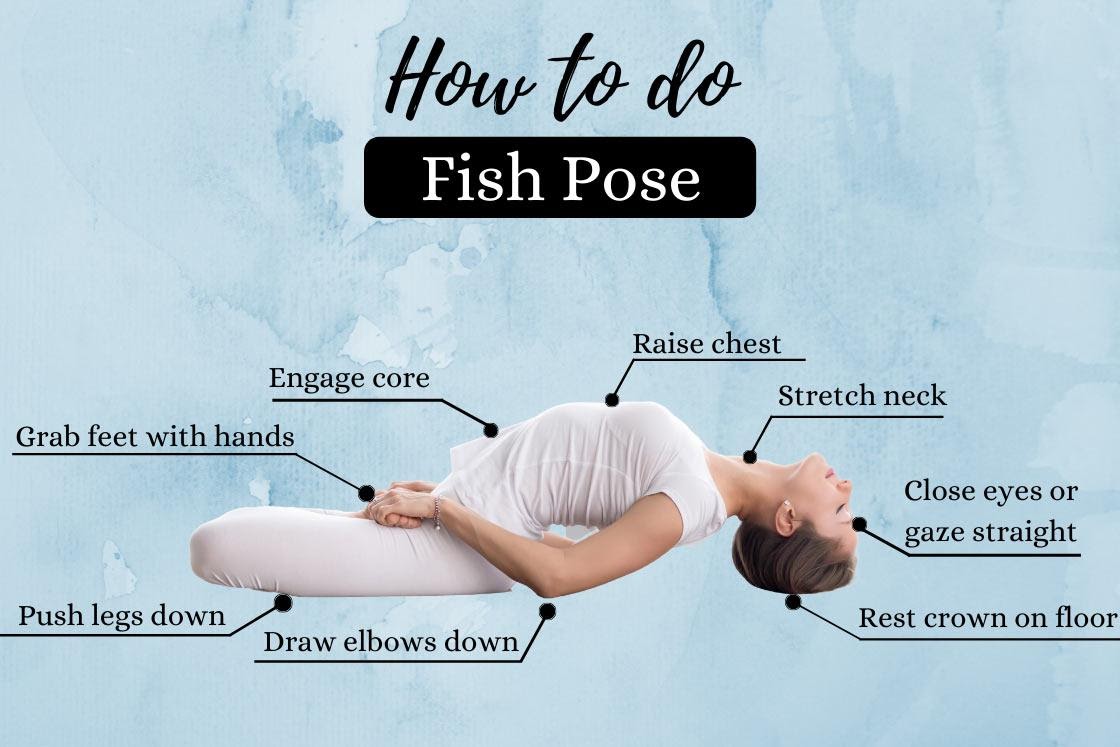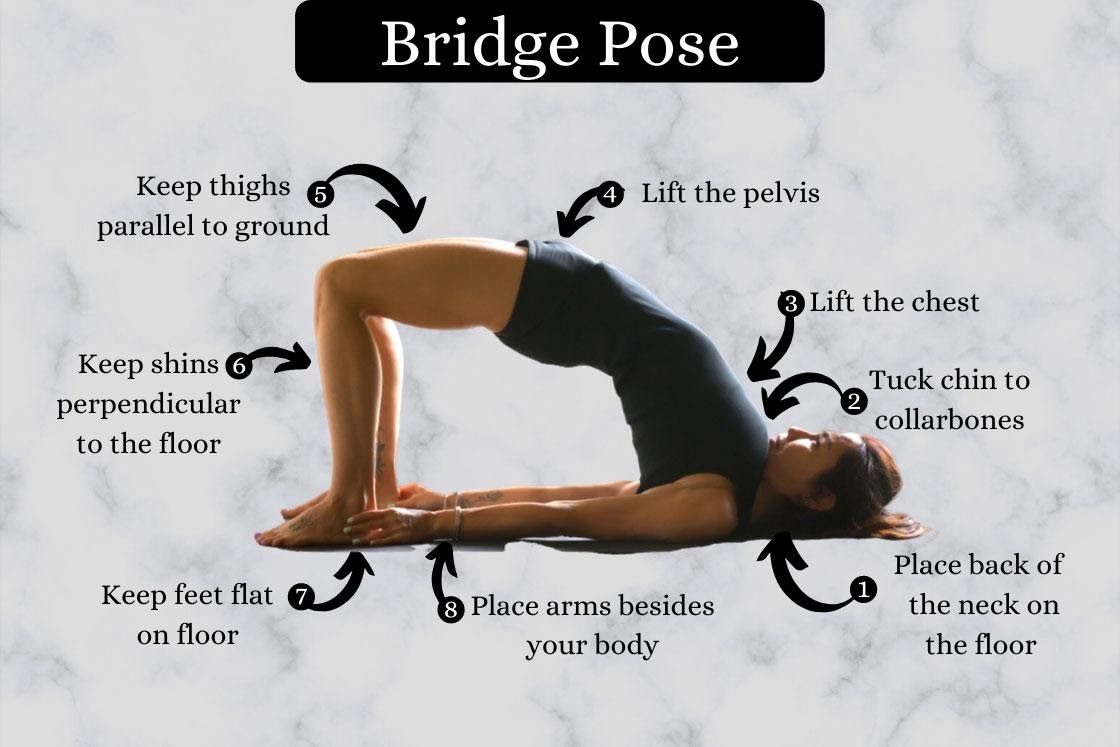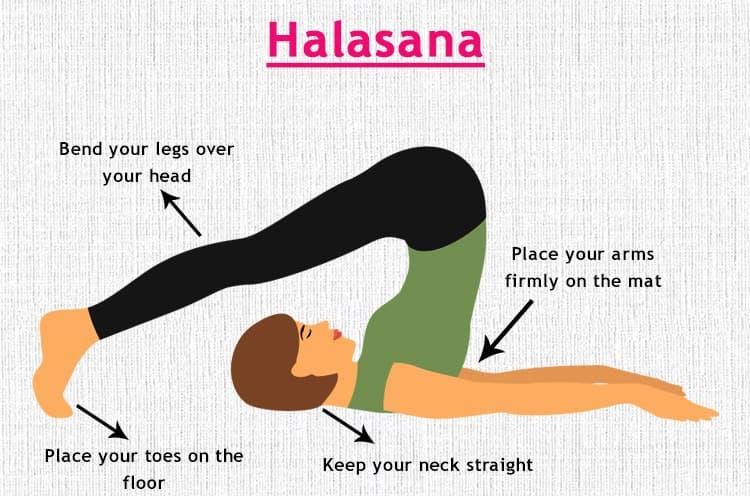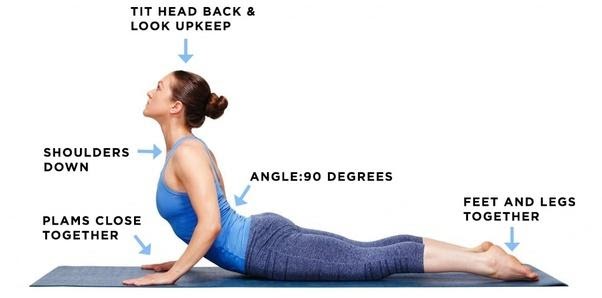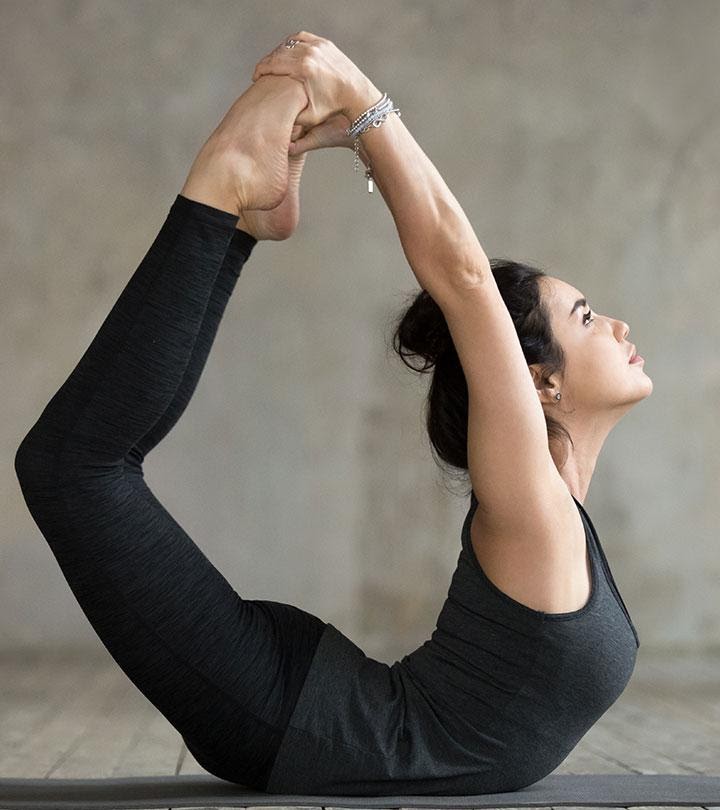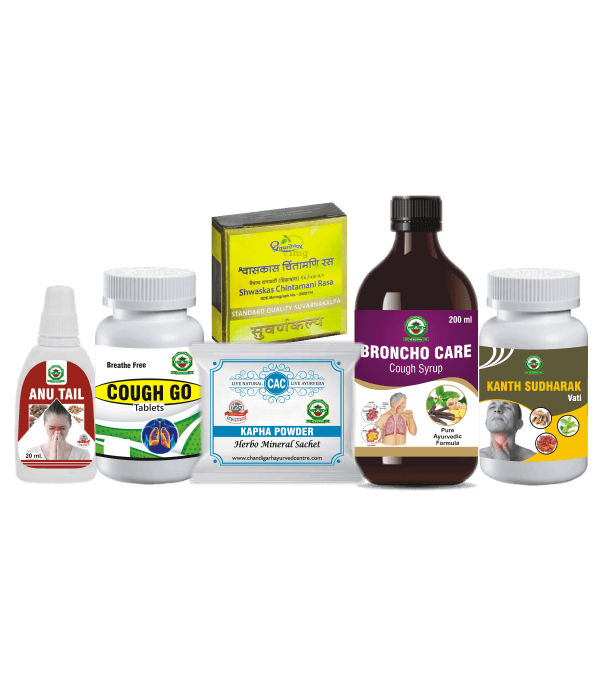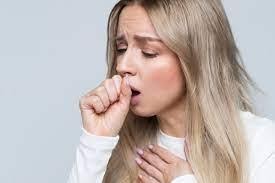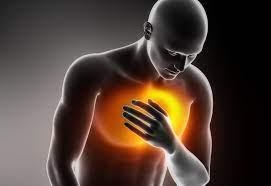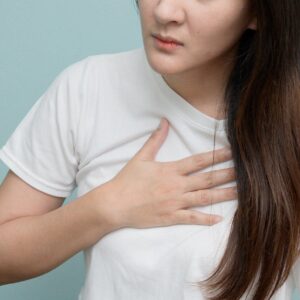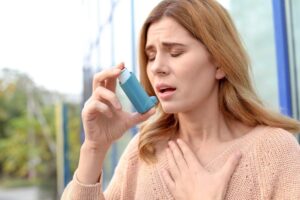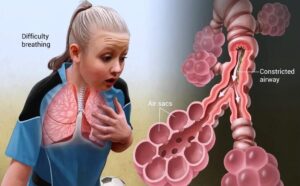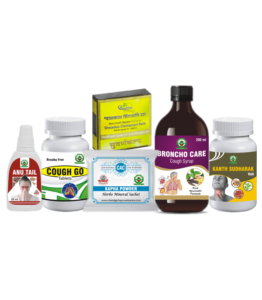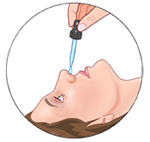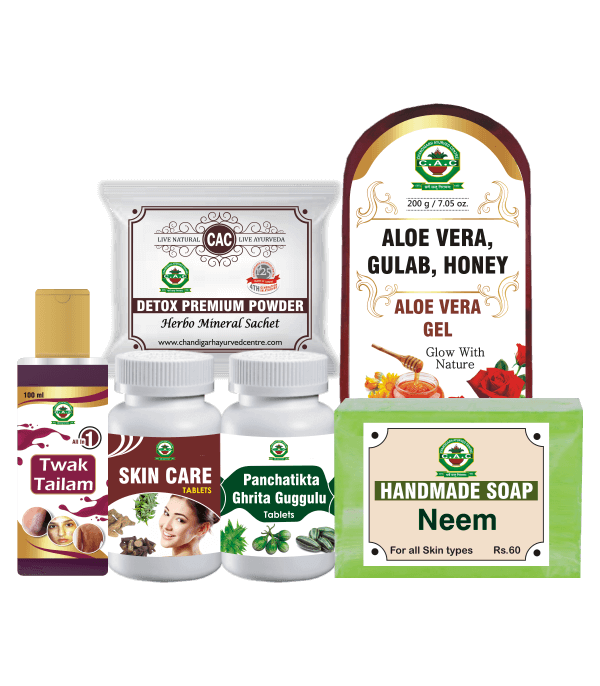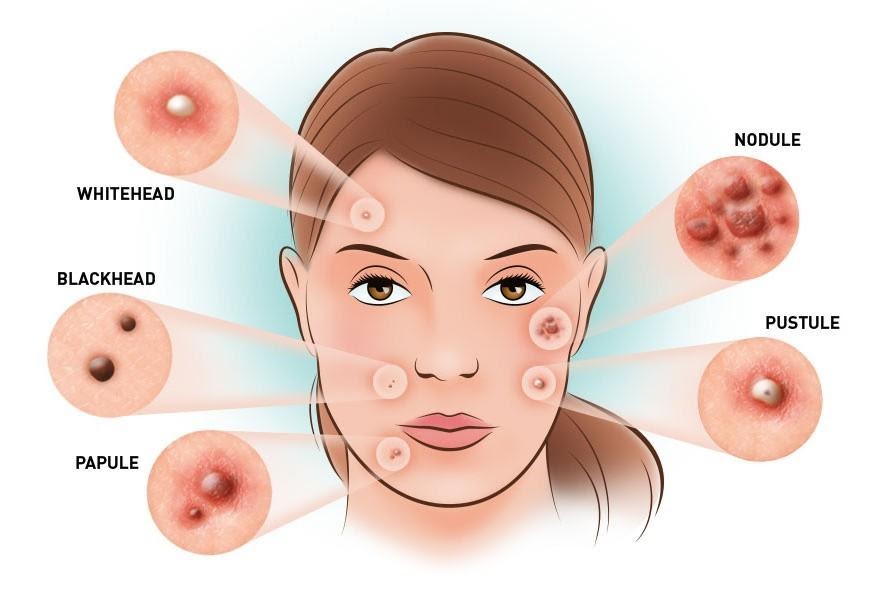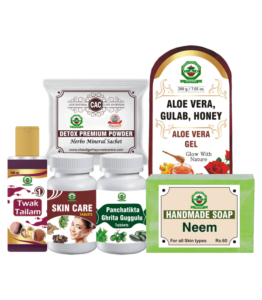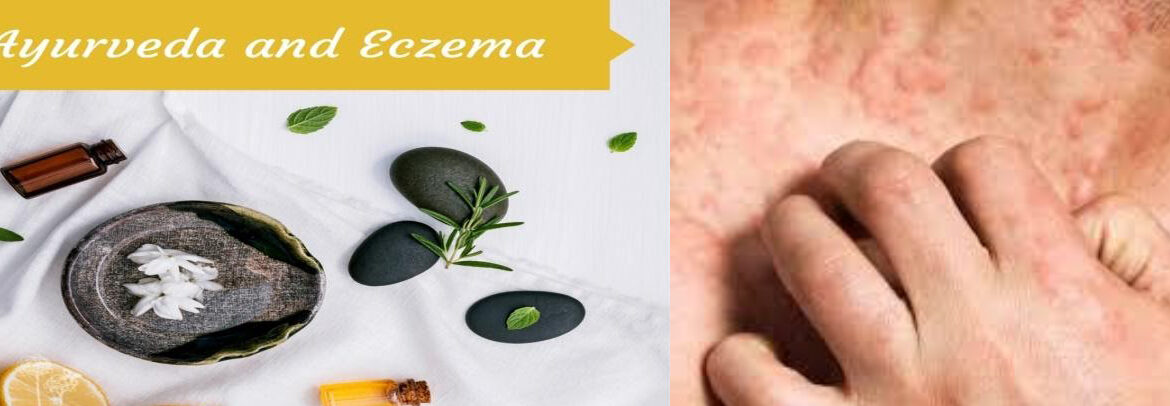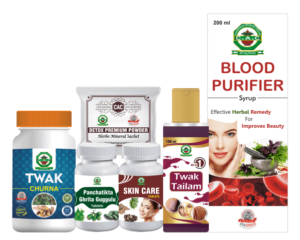Author Archives: Dr. Vaidya Karanvir Singh
ITP – Idiopathic thrombocytopenia
- June 23, 2021
- Posted by Dr. Vaidya Karanvir Singh
- 0 Comment(s)
Idiopathic thrombocytopenia is a disorder that can lead to easy or excessive bruising and bleeding. The bleeding results from unusually low levels of platelets — the cells that helps blood clot.
ITP occur when the body’s immune system mistakenly attacks platelets of the body and destruction of platelets occur. In children, it may follow a viral infection. In adults, it may be chronic.
Symptoms Of ITP-
Immune thrombocytopenia may have no signs and symptoms. When they do occur, they may include:
- Easy or excessive bruising
- Superficial bleeding into the skin that appears as pinpoint-sized reddish-purple spots (petechiae) that look like a rash, usually on the lower legs
- Bleeding from the gums or nose
- Blood in urine or stools
- Unusually heavy menstrual flow
TYPES OF ITP –
There are two main types of ITP – acute and chronic
- Acute ITP is the most commonly seen in children. It usually lasts less than six months.
- Chronic ITP lasts six or more than six months . Adults, people of younger age are effected with this.
CAUSES OF ITP –
As ITP is an autoimmune disorder, So Immune thrombocytopenia usually happens when your immune system mistakenly attacks and destroys platelets, which are cell fragments that help blood clot. In adults, ITP may be triggered by viral infections like HIV, hepatitis or H. pylori (bacteria that causes stomach ulcers)., Mostly in children with ITP it follows viral illness such as the mumps or the flu.
DIAGNOSIS OF ITP–
ITP is diagnosed by history of patient followed by blood investigations. If patient have a low platelet count, your doctor may also go for bone marrow test. If patient have ITP, then bone marrow will be normal. This is because platelets are destroyed in the bloodstream and spleen after they leave the bone marrow. If bone marrow is abnormal, low platelet count will likely be caused by another disease, other than ITP.
Treatment-
In ITP, treatment is maily based upon the platelet count. When Platelets count become low can cause spontaneous bleeding in the brain and other organs. Treatment mainly used in ITP coantains-
MEDICATIONS includes
Corticosteroids
Thrombopoitein recepter agonist
Antibody therapy
Immunosuppersents
Antiboitics
SURGERY – When condition or symptoms doesn’t improve with medications then surgery is advised .In this splenectomy is performed to remove the spleen of patient.
Ayurvedic Concept For ITP
According to Ayurveda ITP is co-related with bleeding disorder “Tiryaka Raktapitta”. In this disease, all three doshas of body get vitiated which are circulating in the bloodstream and attacks the platelet cells in the body which cause decrease in platelet cell count.
Ayurvedic Treatment Of ITP.
As we see that in Modern Science, there are medications of high dose which have only symptomatic effect and cause side effects like weight gain, osteoporosis, diabetes, fatigue etc. And after surgery of splenectomy there is a decreasing the ability to fight with infectious agents so increase the risk of infections.
So it become very important to consider these factors and choose ayurveda as a preferred pathy for treatment . In Ayurveda for ITP, there are also various herbs that regulate immune function and increase platelet count in the body.
Strengthen and uplift your immune system and treat the illness with CHANDIGARH AYURVEDA CENTRE (CAC).
CAC is manufacturing with herbal products which provide the combination of wide range of Ayurvedic formulations to treat the ailment.
Formulations for ITP by CAC
CAC provides the best and effective combination as Ayurvedic treatment for ITP. These combination are prepared from best quality of herbs following the principles of ayurveda. These are free from any kind of adulterants and safe to use .
ITP CARE KIT
DESCRIPTION OF MEDICINES-
Noni Capsules – 2 Twice daily
Giloy Capsules – 2 twice daily
Nerve Up Tablets – 1 twice daily
Platfer Tablets – 1 twice daily
Stop Bleeding Tablets – 1 twice daily
Detox Premium Powder – 1 sachet twice daily
Noni Capsules
Noni capsules contains fruit of a Polynesian plant that’s commonly called the Indian Mulberry, Morinda Citrifoliua. The capsules reduce the rashes skin, fatigue.
Stop Bleeding Tablets
CAC stop bleeding tablet is a pure herbal formulation that acts as an anticoagulant in nature. Stop bleeding tablets are combination of herbs- nagkesar , laksha , mochras, Swarn gandhak, Kehrwa pishti . It helps to stop or reduce heavy bleeding. these tablets have anti-inflammatory, pain killer, anticoagulant properties.
Detox Premium Powder
The powder contains a mixture of herbs which plays very important role in the treatment of ITP. The effective combination strengthen the immune system and having the ability to fight against infections with having antibacterial, antiviral, Anti-inflammatory properties.
Giloy Capsules
Giloy Capsules are natural and purely ayurvedic formulation. Giloy can be used in the form of capsules, juice and powder. But CAC capsules are highly effiecient as they contain required amount of Giloy in them and are 100% natural and safe. Giloy is considered as one of best medicine in ayurveda to fight against many diseases and increase immunity.
Platfer Tablet
These are herbal combination prepared from herbs like Papaya (Carica papaya) & Giloy (Tinospora cordifolia) that in combination increases the platelet counts naturally and builds up immunity.
Nerve up Tablet
Nerve up tablets help in balancing the vitiated doshas and acts as nerve stimulant. This tablet helps to treat the symptoms related to ITP.
As this kit contains the medicines which have multi-dimensional effect on body which is required for the illness . For detailed information visit our website
https://www.chandigarhayurvedcentre.com/product/itp-care-kit/
ROLE OF SURYA NAMASKAR IN LIVING HEALTHY LIFE
- June 23, 2021
- Posted by Dr. Vaidya Karanvir Singh
- 0 Comment(s)
INTRODUCTION-
Sun Salutation (suryanamaskar) is an ancient technique of paying respects to the sun. It is a form of expressing gratitude to this source of all life on earth. Sparing just 10 minutes for yourself every day can have dramatic changes in various aspects of your life. Hence, Surya Namaskar, or Sun Salutation, has a range of effects on the human body. When done in the right way and at the right time, Surya Namaskar can totally change your life. Improves overall health, strengthens the body and relaxes the mind.
CONSEQUENCE OF SURYA NAMASKAR-
आदित्यस्यनमस्कारंयेकुर्वन्तिदिनेदिने।
जन्मान्तरसहस्रेषुदारिद्र्यंनोपजायते।।
Aadityasyanamaskaram ye kurvanti dine dine |
Janmaantarsahasreshudaridryamnopajaayate||
Meaning –
The person who does Surya Namaskar is untouched by poverty for his thousand lifetimes.
INCREDIBLE BENEFITS OF SURYA NAMASKAR-
Improves Blood Circulation-
- Regular practice improves the blood circulation of the body.
- Apart from generating a lot of movement in the body, the breathing patterns in the Surya Namaskar that make you inhale and exhale exercise the lungs.
- Improves the functioning of the heart and lungs.
- It also ensures that fresh oxygenated blood is reaching all parts of the body.
- Exhaling helps discard toxins from the body.
WEIGHT LOSS BOOSTER-
- Surya namaskar helps in reducing the fat around the abdomen and thus reduces weight.
- It can be converted into a cardio exercise.
- Over a period of time, it will not only help in weight loss, coupled with healthy eating.
IMPROVES MUSCLES TONE AND FLEXIBILITY-
- Once you get into the groove of doing the asana on a regular basis, it will help tone your abdomen and arms.
- In addition, it Tones muscles and improves flexibility of the spine and waist.
- It will also improve the flexibility in your body and strengthen the body from inside.
IMPROVES HAIR AND SKIN QUALITY-
- Sun salutation is powerful in keeping a person’s body strong and healthy.
- Surya Namaskar improves blood circulation to the scalp, thereby preventing hair loss
- The increased blood circulation nourishes the head and enables healthy hair growth
- Different poses help prevent premature graying of hair.
- The blood circulation will prevent ageing of the skin.
- It improves blood circulation to all parts of the body, thus keeping the skin young
- Surya Namaskar improves blood circulation to all parts of the body, thus keeping the skin young
IMPROVE MENTAL HEALTH-
- Since the Surya Namaskar requires concentration, and that helps a person be calmer and improves memory.
- The concentration on the movements and breath will enhance the function of the nervous system, thereby reducing stress and anxiety.
- Reduces stress, moods swings and brings more emotional stability
- Improves concentration power.
- Increases the energy levels with sharpened awareness.
- Sun salutation keeps you healthy and disease free.
HELPS REGULARISE THE MENSTRUAL CYCLE-
- Surya Namaskar practice regulates irregular menstrual cycles.
- It helps in regulating imbalanced hormone level in blood.
MANTRAS/CHANTS-
- Om Mitraayanamahaa
- Om Ravayenamahaa
- Om Suryaayanamaha
- Om Bhaanavenamahaa
- Om Khagaayanamahaa
- Om Pushanenamahaa
- Om Hiranyagarbhaayanamahaa
- Om Marichyenamahaa
- Om Aadityaayanamahaa
- Om Savitrenamahaa
- Om Akaaryenamahaa
- Om Bhaaskaraayanamahaa
- Om Sri Savitru Surya Naaraayanaayanamahaa
Surya Namaskar (sun salutation) consists of sevenasanas that are performed in a cyclic order, thereby creating 12 asanas in total. They are as follows:
Pranamasana:-
Surya Namaskar begins by greeting the Sun God in a prayer position while standing upright. Pranamasana helps in calming down your body and mind.
Hastauttanasana-
Continue the prayer pose from the previous asana and raise your hands up and back. Slowly inhale air, keeping the biceps close to the ears, Raised Arms Pose helps in stretching your chest as well as abdomen and surges the energy flow towards the upper part of the body.
Hasta Padasana-
After stretching your abdominal region, Hand to Foot Pose further massages your belly. Hand to Foot pose improves digestion and enhance your blood flow to the brain. Just exhale, bring the hands down to the floor beside the feet while keeping your spine straight. Make sure that you exhale slowly and thoroughly. Hastapadaasana also plays a significant role in eliminating female diseases.
- AshwaSanchalanasana–
Equestrian Pose stretches spine further along with quadriceps and iliopsoas muscles. there’s a lot of pressure on the shoulders and arms in this pose, so to lessen this, Breathing in, push your right leg back, as far back as possible. Bring the right knee to the floor and look up.
Parvatasana-
This asana gives strenght arms and legs and relieves varicose veins. Mountain pose also stretches calf and spine muscles. Breathe out and lift your waist to make an ‘inverted V’ with your body. Try to keep your heels on the ground.
- Dandasana/ Stick pose-
The plank/stick Pose improves body posture. It also makes more streghten your back muscles and spine. Plank pose stretches your shoulder and chest. You have to take your Mountain pose forward and perform a plank while inhaling. Make sure that both of your hands are just below your shoulders and the body is parallel to the ground.
Ashtanga Namaskara-
Eight Limb Pose asana also helps in strengthening your chest, arms, and legs. Exhale and bring your chin down on the ground. Keep your hips up in the air. Your chin, chest, hands, and knees must be on the ground.
Bhujangasana-
Now, slowly bring your hip down and place your legs as well as midsection on the ground while inhaling. Keep your head up and bend your back. Your body posture will resemble a cobra in this asana. Cobra Pose relieves tension from the back and spine.
Parvatasana-
Keeping up with the cyclic order, Repeat Mountain pose
AshwaSanchalanasana
Repeat Equestrian Pose by lunging with your left leg forward this time.
Padahastasana-
Repeat Hand to Foot Pose
Hastauttanasana
Repeat Raised Arms Pose
PRECAUTIONS & CONTRAINDICATIONS-
Remember that while yoga is for everyone, not all poses are for all people! If your body requires some extra support in this sequence, see the Modifications section below.
- If you have any heart problems, you should consult physician about adding Sun salutation to your fitness program.
- It is recommended that people with high blood pressure avoid bringing their arms overhead.
- If you have low blood pressure, avoid bringing your head below your heart.
- If you have a back injury, be very careful practicing suryanamaskar.
- People with a hernia will likely want to avoid Uttanasana (at least) when practicing Sun Salutation.
NIDAN PANCHAK – DIAGNOSTIC TOOL IN AYURVEDA
- June 23, 2021
- Posted by Dr. Vaidya Karanvir Singh
- 0 Comment(s)
INTRODUCTION –
Ayurveda – The science of life,that originated with the need to understand and cure diseases and to maintain the health of the human being.
For the completion of this hetu , Linga (symptoms) and Aushadha (medicine) i.e. concept of Trisutra is explained in Ayurveda of these three sutras two are meant for diagnosis of disease and the third one is meant for treatment purpose. For treatment of any disease it is very important to make proper diagnose of the disease. Nidana panchaka is very important tool for making diagnosis of diseases in Ayurveda.
CLINICAL IMPORTANCE OF NIDANA PANCHAKA
In Ayurveda the diagnostic approach is of two types which consists of Rogi Pariksha and roga pariksha. In which Rogi preeksha gives us knowledge about diseased person. In this we examine the patient with different tools And roga pariksha gives us complete knowledge about a disease from starting to complete manifestation of disease.
In Ayurveda there are five means of diagnosis known is nidanpanchak i.e.
Nidan- Causative factors
Purvarupa – Pre- symptomatic features
Rupa – Sign & Symptoms of disease
Upshaya- Relieving and Aggravating factors
Samprapti- Pathogenesis of disease.
These five factors gives information not only about complete process of menifestation of disease but also about prognosis, treatment and differential diagnosis of the disease.
In Modern science diagnosis of the disease is done by using investigations and imaging techniques like X-Ray, CT scan, MRI But sometimes the patient can’t afford the costly imagining techniques like CT scan, MRI etc. Thus we have to know the diagnosis parameters according to Ayurveda which helps in reducing the burden on the suffering patients .
In Ayurveda there are five means of diagnosis (Nidana Panchaka) namely Nidana (cause or etiology), Purvarupa (Prodromal symptoms or Premonitory symptoms), Rupa (Specific sign and symptoms or clinical features), Upasaya (Relieving and Aggravating factors), Samprapti (Pathogenesis) . These five elements collectively or selectively help in making the accurate diagnosis.
Explaination of Nidana Panchaka –
A) Nidana (Etiological factors):
“Tatranidanmkaranmiyuktamagre”.
Nidana is the causative factors of disease.
Clinical importance of Nidana –
Knowledge of Nidana helps in identifying the causes of the disease – If the Nidana is not identified we can’t isolate them. If the causative factors are in contact with the body for a longer time, the disease caused by them keeps worsening with time and become incurable.
Nidana gives a clue towards the chronicity of the disorder- For e.g. If the patient having liver cirrhosis has a history of consumption of alcohol for long time, we can assume that the disease is a chronic one .
Knowledge of Nidana helps in rectifying the causative factors causing the disease – as it is said in ayurveda
‘Sankshepataha Kriya Yogo Nidana Parivarjanam’ .
The best and simplest form of the treatment is avoiding the causative factors, which are responsible for disease.
B) Purvarupa (Prodromal features):
The symptoms which give indication of a future disease are known as prodromal symptoms.
”pragutpattilakshanam”
These prodromal features helps to know the dosha responsible for that particular disease but not the nature of forthcoming disease. Basically there are two types of puravrupa, one which indicate the forthcoming disease but doesn’t specify the involvement of dosha is known as samanya purvarupa (general prodromal symptoms). Second variety of puravrupa is known as vishishta (specific) purvarupa, in which appearance of prodromal symptoms observed specifically by specific dosha. Clinical importance of Puravarupa
For diagnosis of disease – If two diseases are having identical Nidana, then Purvarupa help in making correct diagnosis. For eg. Nidana of Hikka (Hiccup) and Swasa (Dyspnea) are identical. Here disease will be diagnosed in its Purvarupa avastha (Stage) with the help of specific prodromal symptoms such as heaviness in throat and chest, astringent taste in mouth and gurgling sound in abdomen are the prodromal symptoms of Hikka while hardness in bowel, pain in sides, compression in cardiac region, miss passage of vital breath are prodromal symptoms of Swasa.
For differential diagnosis – E.g. If the color of the urine is either yellow or mixed with blood eliminated through the urine without the manifestation of prodromal symptoms and sign of Prameha (Diabetes), such patient should not be diagnosed as Prameha rogi (Diabetes), on other hand it diagnosed as Raktapitta (Bleeding disorder).
For treatment of disease – With the help of knowing puravrupa of disease we can detect the disease at an earlier (i.e. before the actual manifestation of disease) stage and plan for treatment can be started to prevent further manifestation of disease. E.g. In Jwara, Langhana chikitsa is indicated in Purvarupa and in Ashmari, Snehadi karma is indicated in puravrupa avastha to cure the disease from root .
For prognosis of disease – If number of prodromal symptoms is few, then the disease is easily curable. If Purvarupa manifest with moderate intensity then disease is krichhasadhya (difficult to cure). If all prodromal features are present in a patient then the disease is incurable.
C) Rupa (Specific sign and symptoms):
“Pradurbhutalakshanampunarlingam”
Rupa of a disease indicate the actual onset of the manifestation process. The pathogenesis gives rise to various symptoms of the disease. Hence the pathogenesis (Dosha dushya sammurcchhana) occurring inside the body is expressed externally as the symptoms of that disease . i.e. It indicates the specific disease by manifesting specific symptoms of that disease. For e.g excessive unclean urination in Prameha (Diabetes).
Clinical importance of Rupa
For diagnosis of disease Few diseases have no prodromal symptoms like Vata vyadhi , Ksataksheena and their diagnosis is made only by observing its clinical feature (i.e. In Rupaavastha). By seen the cardinal sign and symptoms of disease we can diagnose the disease.
For differential diagnosis of disease – By observing the signs – symptoms and detailed history of patient we can diagnose the disease which has similar sign and symptoms. E.g. Cough and Tuberculosis, Annadravasoola (Pain is aggravate after intake of food) and Parinamadravasoola (Pain is relief after intake of food) only few symptoms are common.
For treatment of disease – Knowledge of Rupa is very much important for planning specific treatment of disease. As some diseases have only symptometic treatment.
For prognosis of disease – If all the symptoms of disease are produced, then that disease is difficult to cure.
D) Upasaya (Relieving and Aggravating factors):
When a patient is relieved of symptoms and feel comfortable by the diet, daily regimen and medicine, then these relieving factors are called as Upasaya. The relief should not be temporary. The symptoms should be reduced permanently. E.g. Cold water gives relief to thirst and burning sensation in case of Nava jwara for a short period but later aggravate the condition. This doesn’t come under upasaya. And opposite to this, the aggravating factors are called as Anupasaya.
Clinical importance of Upasaya
For diagnosis of disease-
‘goodhlingamvyadhiupshyaanupshyabhyamparikshet’
Relieving factors helps in making correct diagnosis, when it is difficult to diagnose a disease due to obscure or mysterious manifestation. Then by the use of aggravating or relieving factors we can diagnose the disease. E.g. In obstructive jaundice the medicine “Trikatu powder” will give relief. But if it is not an obstructive jaundice then the symptoms will aggravate due to hot and sharp property of the medicine.
For treatment of disease – This upasaya and anupasaya also help in treatment of disease. Acharaya chakrapani mentioned 18 types of upshaya for treating diseases .
E) Samprapti (Pathogenesis):
The changes which take place in the body from initiation of the etiological factors to the manifestation of symptoms are collectively known as Samprapti (Pathogenesis). The Dosha vitiated due to various causes are moving in various directions in the body. Depending upon the cause or type of vitiation and direction or route followed by the vitiated doshas, there is a settlement (Dosha-dushya sammurchchhana) at the defective site (kha-vaigunya).
Samprapti is of six type i.e Samkhya, Pradhanya, Vidhi, Vikalpa, Bala, Kala samprapti
CONCLUSION –
In Ayurveda it is said that before the planning of treatment, the correct diagnosis of the disease is very much essential which means a physician must examine the disease thoroughly before prescribing medicine. Nidana panchaka is a tool for diagnosing a disease at various stages. Naming of disease is not given that much importance, but knowing the definite etiological factors, dosha vitiation, pathogenesis or progress of disease and to check it at early stage is given prime importance. In modern concept of medicine, treatment of a disease starts after actual appearance of a disease. But in Ayurveda, good knowledge of nidan panchak can help the physician to diagnose the disease in early phase , accordingly one can decide his line of treatment and prevent further manifestation of disease.
NASYA
- June 23, 2021
- Posted by Dr. Vaidya Karanvir Singh
- 0 Comment(s)
Nasya is one among the panchkarma procedures. In nasya karma medicines are administered in the body by the nasal route. In ayurveda definition of nasya karma is given as –
Aushdhi v aushdhisidhasneham nasikabhyam diyte iti nasyam
In nasya karma medications (Medicated Oil/Ghee/ Decoction/ Powder/Smoke etc.) is administered by Nasa (Nose) mainly to remove the vitiated Dosha found in Shira and its constituent parts. As in Ayurveda it is said that that –
‘Nasa hi shirso dwaram ‘
Acharyas have been placed Nasya as one of the Panchkarma procedures, which signify the importance of Nasya as Shodhana Karma (Purification procedure) especially for Urddhva-jatrugata Vikara (diseases which related to the upper clavicle part of the body). In panchakarma procedures doshas or the impurities are removed from the body through its nearest route like to remove impurites from amashya (stamach) vaman is indicated, for detoxification of pakvashyagata dosha (intestines) procedures of virechana and basti are useful like ways for detoxification of doshas collected in shira, nasya karma is used.
Types of Nasya– Based on different type of medications used and procedures used to administration nasya karma is into five types-
- Navan – Snehan and shodhan
- Avpidna- Shodhan and stambhan
- Dhoompan- Smoking using herbs
- Pradhooman- Prayogika, snehika, virechanika
- Pratimarsha- snehaniya and virechanika
Above mentioned types of nasya karma again classified into three types based upon their mode of actions-
Rechana- In this medicines are administered for purifiction
Tarpana – for nourishment
Shaman – for retraining
Medication used in nasya karma-
Medicines used in nasya karma are totally dependent upon the purpose of giving nasya – In vata realted disorders like in headaches, migrain and for nurturing, medicated oil or ghrit are used. In Kapha related disorders, drugs that cause some irritation and releives the blockage of channels are used. Acharaya charak has mentioned shirovirechana gana that contains herbs which clearifies the channels used in detoxification .
Sirovirecanopag mahakashya contains drugs – Jyotishmati, Kshavaka, Maricha, Pippali, Vidanga, Shigru, Sarshapa, Apamarga, Shveta, Mahashveta
Indications of nasya karma–
– Stiffness or pain of head,neck, or jaw
– Headache and Migraine
– Sinus pain and congestion
– Toothache, loose teeth, receding gums
– Hoarseness of voice
– Twitching or drooping eyelids
– Tingling sensations on face
– Obstruction in throat
– Uvulitis, Tonsillitis, Laryngitis, Pharyngitis
– Speech disorders and loss of speech
– Bell’s Palsy (facial paralysis)
– Goiter
– Glaucoma
– Pituitary or space-occupying tumor
– Unconsciousness/fainting
– Any disorders above clavicle area
Contraindications of nasya procedures
– Children (under 7)
– Old age (over 80)
– Pregnancy
– Menstruation
– Just before or after shower/bath
– Indigestion or full stomach
– Diarrhea
– Hunger or Hypoglycemia
– Thirst or Dehydration
– Exertion
– Intoxication
– Physical exercise
– Acute fever
– Just having done virechana procedure or basti
Nasya Procedure–
In Ayurveda every panchakarma procedure consists of three main procedure like ways the procedure of Nasya can be classified under three headings-
Poorvakarma
Poorvakarma includes facial oil massage or application of steam to face, forehead, head, ears and neck. This helps to loosen the adhesive Doshas.
Pradhanakarma
This is the main step of Nasya and includes instillation of luke warm medication in both the nostrils alternately, by keeping his neck straight, with the help of proper instrument like dropper.The sole, shoulder, neck, ear and palm are gently massaged after the administration of the medicine.
Paschatkarma
In this procedure patients mouth is cleaned by giving luke warm water for gargles and then medicated smoke is given for inhalation.
Mode of action of Nasya karma-
The medicines in nasya karma administered through the nostrils goes into the nervous system (Brain) and venous system (Blood circulation) present in and around the nostrils. Then they clear the obstruction in the nearby area. Thus it relieves the blockage of the channels in that area and the diseases are cured. Medicated oils / juices / powders which are administered through the nostrils stimulate the vital centres of brain to overcome diseases.
When nasya karma is done three types features are seen according to quantity given to patient-
- Samyak Yog Lakshan: When medicines are given in proper quantity.
“Urah Shiro Laghavam Indriyaatacchayam Stroto Vishudhi Bhavet Vishudhe”
There is feeling of lightness in the chest region and head,
All the five Gyanendriya work in a proper manner
All body channels are open and clear in case of Samyak Yog Lakshan.
- Ayog Lakshan: Medicines are given in less quantity then required.
“Galoplepah Shirso Gurutvam Nishtheevanam Cha Api Ath Durvirikte
There is feeling of something covering the throat,
Heaviness in head and
Excessive salivation
- Atiyog Lakshan: In this , medicines are given in more quantity then required.
“Shiro Akshi Shankh Shravan Arti Todav Atyarth Shudham Timiram Ch Pashyet”
Pricking pain in head, eyes, temporal region, ears
Cataract
Benefits of Nasya Karma-
Nasya is the procedure that cleanses, purifies and strengthens the nasal passages, allowing you to breathe fully and easily again. Due to its many benefits nasya karma is indicated in all type of upper clavicle disorders ( urdhav jatrugata vikara)
In vata related disorders medicated oil is administered into nostrils to strengthened the nervous systems and in kapha related disorder powder of medicated herbs is administered which does the purification of the srotas .
Nasya is a procedure that has to be performed with very care . The quality and quantity of the medicines that to be used depend upon the patient’s condition. The procedure of nasya karma has to be done by a trained professional . Nasya therapy will cleanse, purify, and strengthen the nasal passages and stimulates centres in nervous systems.
Importance of Dincharaya
- June 23, 2021
- Posted by Dr. Vaidya Karanvir Singh
- 0 Comment(s)
Activities done by an individual from morning to evening are alluded to as Dincharya.
In Ayurveda, dincharya is considered as an action to forestall physical, mental and social issues. A decent food style and a limited way of life are the key standards establishing such measures in Ayurveda. Varoius step included as:
Brahm mahurta Jagran (Waking up) and Malatyag (Defecation)
Brahma muhurta is typically 1-1.5 hours before dawn. It shifts from one locale to another. In the event that the hour of dawn in your nation is 6 a.m. then, at that point your Brahma Muhurata will be somewhere near 4:30 toward the beginning of the day.
Getting up late causes lethargy and laziness and makes the entire day slow. To work with the absorption of food devoured the earlier evening, getting up early is pivotal. Predominance of Vata in this period assists with passing the Mala (pee/stools) early. In this way, getting up early aides in refinement of body. As the term of the stay of the Mala inside the body expands, the vulnerability of the body to deft diseases increments.
Nasya – Nasal therapy
Charak Samhita suggests placing a couple of drops of Anu Thailam in every nostril consistently toward the beginning of the day. This cycle is called Nasya or nasal treatment in ayurveda. Charak advocates it during three seasons:
- Pouring Season
- Pre-winter
- Spring
Oral wellbeing brushing, tongue scratching and oil pulling
In the wake of awakening the following most significant custom in Ayurveda is dealing with your oral wellbeing. It’s anything but a three-venture measure,
- Brushing your teeth (Dhantdhavna)
In Ayurvedic dinacharya, teeth are brushed utilizing a blend of various spices. The flavor of these spices fluctuates from sweet to better and contains every one of the six preferences for Ayurveda.
Brushing your teeth with spices gives a cleaning activity that eliminates plaque and buildup from your teeth. The counter microbial and hostile to contagious specialists created by the fundamental oils in the spices help in keeping the germs under control.
- Oil pulling (Kavla-Gandoosha)
The second significant thing you can accomplish for your oral wellbeing is oil pulling. In Ayurveda, the vast majority perform oil pulling as a custom once per week. You can either do a day by day oil pulling or you can do it’s anything but seven days. I like to do it’s anything but seven days as it were.
- Tongue scratching
Tongue scratching is the main thing you can accomplish for your oral wellbeing in Ayurveda. No place in current medication, it is needed to scratch your tongue. Every one of the germs and microscopic organisms that produce terrible breath are available on your tongue.
Your taste buds are available on your tongue. The poisons aggregated for the duration of the night are likewise present on the tongue.
Drink water (Usha pana)
Water subsequent to awakening is the principal thing that enters your stomach toward the beginning of the day. Ayurveda suggests drinking warm water for all doshas. Warm water builds your digestion toward the beginning of the day and keeps it dynamic for the duration of the day.
It likewise helps in the disposal and flushing of abundance poisons from the body.
Drinking warm water with nectar and lemon to builds your admission of Vitamin C toward the beginning of the day and improves your resistance.
Exercise (Vyayama)
This should be possible in any structure, be it Yoga ex. Surya Namaskar or running. Exercise will eliminate stagnation and fat from your body and will reinforce your muscles. Find out about the different advantages of yoga.
Daily Abhyanga/Massage
A day by day Abhyanga practice is suggested in Ayurvedic dinacharya for all dosha types. An every day abhyanga practice ought to be done on an unfilled stomach prior to washing.
It is otherwise called Snehana in Ayurveda which means love. Kneading your oil with warm oil each day is an extremely cherishing and relieving custom. A day by day abhyanga has a great deal of advantages in Ayurveda,
- Builds blood course
- Eliminates poisons
- Saturates skin
- Opens up sweat organs for poison development
- Opens up nerve channels
- Permits oxygen course in the body
- Initiates and empowers the body
- Disposes of dry layered skin
Bathing (Snana)
Bathing or Snana is one of the Yamas in Ayurveda and has been laid exceptional accentuation on. Washing is the custom of physical and mental cleanliness in Ayurveda. An every day shower permits your body to dispose of the overabundance heat caught for the duration of the evening.
It revives your psyche and improves cerebrum lucidity toward the beginning of the day. It readies your body for another day.
Bathing ought to be finished with cleaning activity on your body, to eliminate abundance oil and dead skin from the body.
Breakfast
Eating is an individual decision. In the wake of following this dinacharya, a great many people will be eager. On the off chance that you feel hungry, have a basic feast with some fat to keep you full for a more extended time frame.
Since it is the main dinner, it should uphold and feed your stomach related framework. Eating zesty, difficult to process food in the first part of the day will squeeze your stomach related fire.
Importance of Purvakarma in Ayurveda
- June 23, 2021
- Posted by Dr. Vaidya Karanvir Singh
- 0 Comment(s)
Purvakarma Definition
Viitated Doshas are constantly situated in the body parts where the sickness is delivered. All Doshas are to be gathered into the kostha from where they are killed through Panchakarma, for gathering all Doshas (toxins) in the nutritious waterway Snehana (oleation treatment) and svedana (perspiring treatment) are finished. Both the treatments snehana and svedana assume a significant part as Purvakarma as well as fills in as a line by preliminary measures. Previously, the genuine methodology of decontamination/detoxification starts, there is an extraordinary need to set up the body for the necessary strategies to urge it to relinquish the poisons. Thus, there are 3 procedures of Purvakarma.
- Deepana & Pachna
- Snehna
- Svedna
Deepna & Pachna
Deepna: The Drugs which builds Agni however doesn’t having Amapachana (digestion of undigested material waste) property called as Deepana.
Pachna: Which drugs invigorate Agni to do Aharapaka (metabolic change) is called as Pachana. Eg. Langhana (the methodology which achieves daintiness in the body) and Musta
Deepna & Pachna: The medications which are having the two properties called as Deepana and Pachana drugs. eg. Chitraka so we reason that Deepana-Pachana (hors d’oeuvre digestives) tranquilizes fundamentally Agni Mahabhoot (Elements) overwhelming.
Advantages of Deepna & Pachna
Deepana Dravya (drugs) which invigorate the appetite14 (~usually served before a feast) by remedy of Mandaagni (low stomach related fire). All medications of Deepana having Katu Rasa, (Pungent taste)Katu Vipaka (post-digestivetaste) & Usna Virya (dynamic rule) for instance Chitraka (Plumbago zeylanicum) Maricha (Piper nigrum, Pippali (Piperlongum), Pippalimoola (root of Piper longum), and Jeeraka, (Cuminum cyminum) so all medications are useful to improve Agni and Ignite Vata Dosha.
Pachana Dravya for instance Hingu, (Ferula foetida) Guduchi (Tinospora cordifolia),, Nagkeshar (Mesua ferrea) Musta (Cyperus rotundus)&Ajmoda(Trachyspermum roxburghianum) having Katu-Tikta Rasa, Ushana Virya (dynamic guideline), Katu Vipaka (bio change) are invigorate peristalsis of digestive system, expanded neighborhood blood supply, increment emission of stomach related proteins and increment retention of supplements. So it Deepana(appetizer) medications can be taken before the suppers and Pachana(digestive) medications can be endorsed after feast. So Deepana-Pachana (canapé digestives) drugs having comparative properties act distinctively depending on the time endorsed for their admission.
Snehana (Oil therapy)
This treatment makes the body delicate and breaks down the poisons. There are two sorts of snehana for example Inner Snehana and External Snehana. In interior snehana cured Siddha Ghrita or cured Siddha Taila is utilized orally as per the portion recommended by the specialist, this oil or ghee is known as sneha. It’s anything but an ointment and assists with diminishing the dryness of the body. In outer snehana there are incorporated a wide range of body rub with the assistance of Sneha exhorted by the educator. This treatment is helpful for all skin issues. Snehana is likewise executed to the patients of vamana and virechana.
Advantages of Abhyanga (External Snehana)
Abhyanga or External Oleation implies use of unctuous material (with tila oil/different sedated oils/ghrita and so on) on the outside surface of the body for example skin which mellow and gives gloss to the skin and eliminates dryness from the body. The upsides of Abhyanga according to Ayurvedic writings are-
- It (rub) balances the maturing interaction ( Jaraahara)
- It loosens up the tractable muscles subsequently helping in unwinding. (Shramahara)
- As Abhyanga is finished with Sneha Dravyas which pacifiy vata dosha (Vatahara).
- Abhyanga improves nature of vision. (Drishti Prasadakara)
- Abhyanga sustains different body segments (dhatu), delivering pushti. (Pushtikara)
- It expands life expectancy of person. (Ayushyakara)
- It helps in prompting sound rest. (Swapnakara)
- It makes skin flawless and expands its sound status. (Twak Dandhyakara)
- It instigates strength in body, making it versatile for enduring a wide range of unfriendly conditions. (Klesha Sahatva)
- People who routinely practice Abhyanga are very little influenced by any kind of injury. (Abhighata Sahatva)
- It eliminates the earth, improves appearance of body and builds its solidarity. (Mrujavarna Balaprada)
Swedana (Sweating)
Swedana is the method that eases Stambha, Gaurava, Sheeta which actuates Swedana (Sweating). It plays a double part in Purvakarma just as Pradhanakarma.
Swedana has unwinding and detoxifying consequences for the human body. Sweda is ordered into various assortments as per the diverse Acharyas.
As per Charaka, two primary types are Sagnisweda (warm) and Niragnisweda (Non thermal).
Niragnisweda is additionally arranged into ten types viz. Vyayama (work out), Ushnasadana (warm rooms), Guru Pravarana (substantial covers), Kshudha (hunger), Bahupana (over the top drinking), Bhaya (dread), Krodha (outrage), Upanaha (mortars), Ahava (war) and Atapa (sunbath).
Sagnisweda is ordered into 13 types viz. Sankara (blended), Prastara (hotbed), Nadi (steam pot), Parisheka (baptism), Avagaha (shower), Jentaka (sudatorium), Asmaghana (stone bed), Karshu (channel), Kuti (lodge), Bhu (ground bed), Kumbhi (pitcher bed), Kupa (pit sudation) and Holaka (under the bed). Where as
Acharya Sushruta ordered Swedana into primary 4 types:
Tapa sweda (Direct warmth), Ushmasweda (Steam), Upanah Asweda (poultice), Dravasweda (warm liquid)
Advantages of Swedna:
- Equilibriums Vata and Kapha humors in the body
- Disengages poisons; ousts them through the minuscule pores of the skin alongside sweat
- Expands course; decreases aggravation
- Renews and restores the skin
- Improves absorption
- Eliminates daze
- Follows up on fat tissues
- Assuages pressure
- Facilitates sore muscles
- Diminishes deadness, solidness, unbending nature, substantialness; improves portability
HOW YOGA HELPFUL IN INCREASING YOUR IMMUNITY
- June 23, 2021
- Posted by Dr. Vaidya Karanvir Singh
- 0 Comment(s)
WHAT IS YOGA?
- Yoga is derived from the Sanskrit word “Yuj” which means “union” or “unite”.
- It is originated in the Ancient India and it is a group of physical, mental, and spiritual practices or disciplines.
- It is essentially a spiritual discipline based on an extremely subtle science, which focuses on bringing harmony between mind and body.
- It is a good technique for inner wellbeing and it does not adhere to any particular religion, belief system or community. Irrespective of one’s faith, ethnicity or culture, the one who practices yoga with involvement will get its benefits.
- Yoga benefits every aspect of body i.e. “inside” and “out”.
ASHTANGA YOGA-
- There are 8 limbs of Yoga Act as guidelines on how to live a meaningful and purposeful life. They serve as a prescription for moral and ethical conduct and self-discipline; they direct attention toward one’s health; and also they help us to acknowledge the spiritual aspects of our nature.
YOGA ASANA FOR INCREASING IMMUNITY
Yoga is a natural way of living youthful and it boosts our immunity and in turn gives you a quality life.
Some Asana and Pranayama may be helpful in enhancing the functioning of your Immune system. During this Pandemic time it is important to strengthen your immune system through Yoga.
The following Yoga can show Amazing effects to your immune System-
Shishu Asana or Child Pose
How to Perform-
- Take a Yoga mat then gently sit on your heels. Hips should be placed on the heels, bend forward, and touch your forehead to the floor.
- Keep the arms alongside your body with hands on the floor, palms facing up.
- Gently press your chest on the thighs and hold on for few seconds.
- Slowly come back to the position again sit on the heels, uncurling vertebra by vertebra and then relax.
Benefits-
It is an excellent pose to decongest the chest and relax and strengthen your immune System and calming the mind.
Contraindication-
The following person should avoid this pose-
- Recent or recurring injuries
- Issues in the knees or ankles
- High or low blood pressure should exercise caution when practicing this pose.
- Ensure that this pose is performed on empty stomach i.e. bowels are empty for this pose, as you may so that you may not experience discomfort.
Matasya asana or Fish Pose-
How to perform-
- Lie on your back and put your feet together and hands alongside of the body.
- Place the hands underneath the hips, palms facing down. Bring the elbows closer toward each other.
- Breathing in, lift the head and chest up.
- Keeping the chest elevated, lower the head backward and the top of the head should touch to the floor.
- With the head lightly touching the floor, press the elbows firmly into the ground, placing the weight on the elbow and not on the head. Press the thighs and legs to the floor and lift your chest up from in between the shoulder blades.
- Hold the pose for as long as you comfortably can, taking gentle long breaths in and out. Relax in the posture with every exhalation.
- Lift the head up, lower the chest and head to the floor and put the hands back along the sides of the body.
- Then slowly come back to the step one and repeat the same process.
Benefits-
This Posture or asana expands the chest and stimulates the thymus gland.
It gives positive impact to the immune system or the body’s defense mechanism.
Contraindications of the Fish Pose (Matsyasana)
- High or low blood pressure
- Migraine
- Insomnia
- Serious lower-back injury
- Neck injuries
SETU BANDASANA OR BRIDGE POSE
How to perform-
- Lie down flat on your back.
- Bend your knees gently and place your feet on the ground hip-width apart.
- Lift up the chest and the soles of your feet should be close to your buttocks and the knees should be in line with the ankles.
- Hands should be placed behind the body with your feet flat on the ground.
Benefits-
- This Asana opens the heart and improves the blood circulation.
- It increases energy in the body and help to put a better resistance against the pathogens.
Contraindication-
- Those who have undergone Surgery of brain, back, neck, shoulder or spinal surgery.
- Severe slipped disc or blood pressure count above 90 diastolic should not attempt this pose.
Halasana (Plow pose)
How to perform-
‘Hal’ means ‘Plough’ and ‘Asana’ means the ‘Pose’. To perform Halasana Follow the steps-
- Lie down in supine position with your palms facing downward put them onto the ground and extend your arms towards the front of your mat.
- Press into your palms and forearms for making a grip to lift up your legs to 90 degrees and hold on to that position.
- Lift your butt and use your abs to bring your feet over your head until your toes touch the floor behind your head. Don’t bend your legs and keep them straight.
- Your hips should be aligned over your shoulders. Press into the feet for support and stability.
- Keep your neck in its neutral alignment and your gaze upward. Also avoid turning your head around.
- Try to stay for 5 deep breaths because it’s hard to breathe in this position because at this stage diaphragm is in compressed state.
- Then slowly come out first return your arms onto the ground, palms facing down.
- Slowly Release your arms, lift your feet, and roll the spine one vertebra at a time down to your mat. Keep your feet together and legs straight.
Benefits-
It is a backward bend that helps to release white cells in the body and strengthening the immune system.
Contraindication-
The following person should avoid this Posture-
- People with Back problems or slipped disc.
- Weak or injured cervical muscles.
- Weak legs, weak calf muscles.
- Pregnant or Menstruating women
Bhujangasana or Cobra pose
How to perform-
- Lie down on prone position or facing downward towards the ground and toes flat on the ground and forehead resting on the floor.
- Keep your legs close together with your feet and heels lightly touching each other.
- Inhale and slowly with the support of your palms raise your trunk and head upwards while keeping your navel on the floor.
- Look upward gently with arched neck, smile and breathe at this position.
- Your stomach should be pressed on the floor.
- Put pressure on your toes by pressing them onto the floor and hold on this position for few seconds.
- Keep equal pressure on both the palms if possible straighten your arms by arching your back as much as possible.
- Don’t overdo the stretch or overstrain yourself.
- Slowly breadth out and gently bring your abdomen, chest and head back to the floor.
Benefits-
It is a chest opening pose which helps release white cells that helps to improve the immunity of the body.
Contraindication
It is not recommended for the following-
- Severe back problems or spinal problems
- Neck-related problems like spondylitis
- Pregnant or Menstruating women
Dhanurasana or Bow pose
How to perform-
- Lie down on your stomach with your feet slightly apart, almost parallel to your hips, and arms should be placed on the side of your body.
- Fold your knees up slowly and hold your ankles with your hands.
- Breathe in and lift your chest off the ground and pull your legs up and stretch it out. Feel the stretch on your thighs and arms.
- One should hold the pose for 12-15 seconds and pay attention to your long deep breaths.
- Slowly come back to the normal position by bring your chest and legs back to the ground, release your hold on the ankles, and relax with your hands on the side.
Benefits-
It is the pose that improves the flow of white cells by putting pressure on the digestive system.
It maintains a healthy immune system.
Contraindications
- High or low blood pressure.
- Migraine
- Insomnia
- Serious lower-back injury
- Neck injury.
ASTHMA KIT- A GOOD COMBINATION OF HERB WHICH HEALS NATURALLY
- June 23, 2021
- Posted by Dr. Vaidya Karanvir Singh
- 0 Comment(s)
DO YOU HAVE THESE SYMPTOMS?
COUGH
CHEST PAIN
TIGHTNESS IN CHEST
WHEEZING
SHORTNESS OF BREATH
“DON’T IGNORE THESE SYMPTOMS GET TREATED ON THE RIGHT TIME IN A NATURAL WAY”…
CAC SPECIAL ASTHMA KIT consists of the following medication which shows positive result in the patients of Asthma and heals in a natural way.
ASTHMA GO KIT
LIST OF MEDICATION
| S.NO. | MEDICINES | DOSAGE |
| 1. | ANU TAIL | *2-3 drops per nostril |
| 2. | COUGH GO | *1tablet twice daily |
| 3. | SHWASAKAS CHINTAMANI RASA | *1tablet twice daily |
| 4. | KAPHA POWDER | *1Sachet twice daily |
| 5. | BRONCHO CARE | *2 teaspoonful twice a day |
| 6. | KANTH SUDHARAK | *1 tablet two times a day |
*It is advised to take these medications after consultation with the doctor. The dosage may differ as per the condition of the person.
DETAILED DESCRIPTION OF THE MEDICATION
ANU TAILA-
- It is herbal oil used for curing various diseases.
Mode of Administration- It is administrated through the nasal pathway, it lubricate, protect and calm the mind.
Ingredients –
- Sesame oil
- Jivanti
- Devdaru
- Shweta chandan
- Cinnamon stem bark
- Vidanga etc.
Benefits-
- Urdhvajatrugata Vikara- It is beneficial in diseases of head, brain, face, nose, and eyes.
- Anu tailam provides natural mask against dust, germs and pollens
- Congestion is the major issue associated with Asthma, the essential herbs present in it helps to decongest.
- It is useful in chronic headache, problems of migraine, sinusitis, improves the voice, and vocal cords.
COUGH GO TABLET-
Ingredients-
CAC Cough Go Tablets contains the following-
- Sonth (Zingiber officinale)
- Kali mirch (Piper nigrum)
- Mulethi (Glycyrrhiza glabra)
- Pippali (Piper longum) etc.
Benefits-
- It is useful in Cough and cold, Bronchitis, Respiratory disorders and Asthma.
- It possesses antioxidant, anti-inflammatory, bronchodilator and expectorant properties.
SWASAKASA CHINTAMANI RASA-
It is a Herbo-mineral formula in the form of tablet useful in the treatment of various respiratory disorders.
Ingredients-
- Swarna bhasma
- Shuddha parad
- Shuddha gandhak
- Swarnamakshika bhasma
- Abhraka bhasma
- Loha bhasma
- Yashtimadhu
- Kantakari etc.
Benefits-
- It is useful in the treatment of cough, cold, bronchitis, asthma, allergic rhinitis, Bronchitis etc.
- It acts on the respiratory system and removes excess amount of Kapha Dosha and make a balance of the three Doshas.
- One should consume it under medical supervision.
KAPHA POWDER-
It is a Herbo- mineral Sachet which is specially designed for healing Asthma in a natural way.
It pacifies the three Doshas especially balances the vata and kapha dosha.
Ingredients-
- Sitopladi churna
- Abhrak bhasma
- Laxmi vilas ras
- Godanti bhasma, etc.
Benefits-
- It is beneficial in chronic cough, whooping cough and also helpful in difficulty in breathing.
- It helps to relieve congestion of chest, sore throat.
- The herbs present in it helps to loosen the mucus accumulated in the chest thus making it easy to cough it out.
- Its main therapeutic effect is seen in lungs, pleura, and airways.
BRONCHO CARE SYRUP-
Ingredients-
- Vasa patra (Adhatoda vasica)
- Kantkari (Solanum surattense)
- Mulethi (Glycyrrhiza glabra)
- Bharangi (Clerodendrum serratum)
- Chitrakmool (Plumbago zeylanica)
- Sonth (Zingiber officinale)
- Pippali (Piper longum), etc.
Benefits-
It is mainly used in chronic cough, bronchitis, whooping cough, common cold etc.
KANTH SUDHARAK VATI-
Ingredients-
- Mulethi (Glycyrrhiza glabra)
- Karpura (Cinnamomum camphora)
- Ela (Elettaria cardamomum)
- Lavang (Syzygium aromaticum)
- Javitri (Myristica fragrans)
- Ajwain (Trachyspermum ammi)
Benefits-
- This herbal tablet is prepared from soothing and expectorant herbs which helps to get relief from all throat problems.
- It gives very effective results in chronic laryngitis, bronchitis and asthma.
HOW THIS MEDICINES WORK?
- Works on the root cause
- Ayurveda works on the root cause of the disease. Firstly helps to detoxify the body, by this act of detoxification the medicine work better and there is good absorption at the affected site.
- On the other side Modern medication that jumps straight to the symptoms and work only symptomatically.
- These medicines balance the three Doshas and act on the Prana vaha srotas or the vital channel of the body.
- It is not just the medicine
- It is more than just medicine as it benefits our overall health and enhances quality of life. Ayurveda also focuses in our diet and lifestyle.
- It is 100% natural and has no side effects and safe to use.
“So heal yourself in natural way through Ayurveda”
- Reduces Other Health risks in Future
- It effectively reduces the risk of severe health complications arising out of untreated underlying cause as Ayurveda cures the root cause of the problem.
- After opting Ayurveda treatment you have a reduce risk of health complications later.
MAKE LIFE RAIDIANT WITH CAC ACNE GO KIT
- June 23, 2021
- Posted by Dr. Vaidya Karanvir Singh
- 0 Comment(s)
WHAT IS ACNE?
Mukhdushika or Acne is a skin condition that arises when your pores or hair follicles become plugged with oil and dead skin cells. It is in the form of whiteheads, blackheads or pimples.
In Ayurveda Acne is termed as “Mukh Dushika”. It is most common among the teenagers, but it can affect people of all ages. Instead of using harmful chemical you can choose Ayurveda to heal your Acne naturally.
As Ayurveda primarily detoxify the whole body and work on the root cause of the problem or it works on the cellular level of the body.
TYPES OF ACNE
“SAY BYE-BYE TO YOUR ACNE”
Stop your worries and get rid of acne by herbal medication.
The following medications are helpful in Acne-
LIST OF MEDICATION
| S.NO. | MEDICINE | DOSAGE |
| 1. | PANCHATIKTA GHRITA GUGGULU | 2Tablet twice daily |
| 2. | SKIN CARE TABLET | 1-2 tablet twice daily |
| 3. | TWAK TAILA | For external application |
| 4. | ALOE VERA GEL | For external application |
| 5. | DETOX PREMIUM POWDER | 1Sachet twice daily |
| 6. | NEEM SOAP | For cleansing |
DETAILED DESCRIPTION OF THE MEDICATION-
Acne Go Kit
According to Ayurveda, Mukh dushika or Acne is caused due to excessive aggravation of Pitta dosha, because of the cool nature of the medicines it helps to pacify the Pitta Dosha and helps to cure the acne naturally.
PANCHATIKTA GHRITA GUGGULU-
Ingredients-
- Shuddh guggulu (Commiphora mukul)
- Neem (Azadirachta indica)
- Amrita (Tinospora cordifolia)
- Gajapippali (Piper chaba)
- Shunthi (Zingiber officinalis) etc.
Benefits-
- Panchatikta Ghrita guggulu is used for curing the skin diseases.
- It is effective in the treatment of Acne and blemishes.
- Ingredients present in it pacify the Pitta dosha also it is Tridoshahara i.e. balances the three humors of the body.
- It is very potent in maintaining the hormonal level of the body thus reducing chances of Acne due to hormonal imbalance.
SKIN CARE TABLET-
Ingredients-
- Haridra khand
- Panchnimba churna
- Panchatikta guggulu
- Patol patra, Ajmoda
- Khadir chhal
- Chirayta
- Mulethi
- Manjistha
- Chopchini
- Gandhak etc.
Benefits-
- This tablet is used to purify the blood.
- It provides cooling effect and detoxifies the blood
- It clears out the obstructions in the blood flow that further increase blood circulation of the skin.
- It minimizes the blemishes, lighten sun tan, delay ageing of skin and heal skin problems.
- These tablets also act as a moisturizer
- Helps in Improving the blood circulation
- Remove blemishes
- Reduce itching and burning sensation of skin
- Prevent acne and pimples
- It is also indicated in case of leucoderma.
TWAK TAILA-
Ingredients-
- Yashti madhu
- Manjistha
- Coconut oil
Benefits-
- It is very effective for acne-prone skin
- Discoloration of skin
- Good for all skin types
- It has pacifying or cooling properties which further beneficial for improving the skin’s elasticity.
- The skin is deeply cleansed as well as moisturized by its application.
- It seeps into the pores and hydrates deeply.
- The molecules present in the Twak taila ensure the repair of the collagen layer of the skin.
ALOE VERA GULAB GEL
It is made up of pure extract of Ghritkumari or Aloe Vera and the mixture of Rosa sinensis or rose petals.
This is an amazing composition which provides a cooling effect on the skin and relieves from burning sensation, itching etc.
Aloe Vera gulab gel helps in maintaining healthy skin and repairs the skin damage.
DETOX PREMIUM POWDER-
Ingredients-
- Parwal Pishti
- Giloy satv
- Shukta Pishti
- Kamdudha Ras
- Gandhak Rasayan, etc.
Benefits-
- Detox Premium powder helps to reduces inflammation, flaking, itching of the skin.
- It helps to balance the Pitta dosha in the body and used in all types of skin disorders.
- The signs and symptoms associated with Psoriasis patients are managed with this Sachet.
- Extracts of Giloy (Tinospora cordifolia) present possesses anti-inflammatory, antioxidant, and analgesic properties helps to deal with Acne and psoriasis easily.
- Ingredients present in it helps to relieve redness associated with acne and also used in other skin conditions like Psoriasis.
NEEM SOAP
It is necessary to clean the face before application of Twak taila or Aloe Vera Gel. So Neem soap is best for cleansing as it possesses antibacterial, Anti fungal, Anti ulcer and have lots of Antioxidants.
Benefits-
- Ultimate acne and pimples killer
- Purifies and cleanse the skin
- Hydrates the skin
- Suitable for all types of skin
- Reduces itching and rashes
- Fight germs and bacteria
- It treats issues like too much oiliness or dryness of the skin
- Heals painful big acne lumps
Why to Choose CAC SPECIAL Acne Go Kit?
- Unique Formula to heal in a natural way.
- Specially designed for acne and skin disorders.
- Prepared and designed under the guidance of Skilled MD doctor.
- Medicine is prepared from 100% natural herbs.
- It is safe to use with no side effects.
- Completely safe and effective.
HOW ECZEMA CAN TREATED IN AYURVEDA
- June 21, 2021
- Posted by Dr. Vaidya Karanvir Singh
- 0 Comment(s)
INTRODUCTION-
Ayurveda is a form of traditional medicine that originated in India and has been practiced for thousands of years. This practice aims to improve overall health and balance depending on your body’s constitution. Ayurveda believed that each person balance depends on five elements that from within our body mind and spirit. These include space, air, fire, water,and earth etc.
Eczema is thought to occur when your doshas are out of balance. Ayurvedic medicine for eczema is done through a combination of a balanced diet plan, herbal supplements and abhyanga (massage) with herbaliazed oils.
Thus, the purpose of Ayurveda is to balance them through natural treatments. It also aims to purify the body, which is said to remove toxins that cause eczema symptoms.
CAUSES OF ECZEMA-
- Minerals and metals in hard water.
- Certain topical medicines
- Harsh surfactants in skin cleansing products, detergents, laundry liquids.
- Fragrances, colours and other chemicals in cosmetics and skincare products.
- 4. Formaldehyde, a skin irritant commonly present in disinfectants.
- Excessive use of tobacco.
- Fabrics that cause more friction, like wool, synthetic, polyester.
- Dry weather, which can lead to skin dryness.
- Weakened epidermal layer
- Due to Hyper-active immune system.
- Hormonal imbalance, especially lower levels of estrogen
SYMPTOMS OF ECZEMA –
- Impaired skin barrier leading to extreme dryness.
- Itchy, erythematous lesions.
- Red, brown or grayish scaly patches on the skin.
- Peeling or flaking of the skin.
- Sudden inflammations or flare ups.
- Blisters that may bleed or weep fluid.
- Skin prone to infections.
- The plaques may harden eventually and lead to the formation of eczema scars
TREATING ECZEMA WITH AYURVEDIC MEDICINE-
In Ayurvedic medicine, eczema is mainly treated with Panchakarma therapy. There are various treatments for eczema in Ayurveda science that include:
PANCHAKARMA TREATMENT-
Panchkarma treatment is a significant cleansing treatment that follows ayurvedic texts. Panchkarma retreat is an extensive treatment, following 5 actions that detoxify your body.
According to acharya charak, 5 actions are Vamana, Virechana, Sneha Basti, Niruha Basti and Nasya.
VAMAN KARMA-
- This procedure for eczema is also known as emesis therapy.
- Vamana karma is considered more effective in destroying pitta.
- In this procedure, a medicated formula filled with 4 parts madanaphala pipli, 2 parts of vacha, 1 part of saindhava lavana and 1 part honey etc.
VIRECHANA KARMA-
- Virechana karma is known as purgative therapy,this treatment focuses on the primary site where pitta is produced, which is in the stomach and small intestine.
- As a result, toxic waste is eliminated before it can manifest into a flare-up.
BASTI KARMA-
- Otherwise known as enema therapy and it detoxifies the whole colon.
- Colon is the primary location of vata nourishes the body.
Anuvasna Basti:-
- In this procedure, Basti is prepared from pippliyadi tailam & administered to patients.
- It provides effective results to the eczema patients.
Twak Basti –
- Basti has a great healing capability and is considered to be the half treatment for many diseases.
- The treatment is mainly used for removing out loosened doshas from the body via the intestinal tract.
- In Ayurveda, there are many types of Basti or medicated enema.
- Twak Basti is prepared from teekshan dravyas and medicinal plant substitutes.
- Twak Basti improves your skin disorders and maintains a good complexion of the skin.
- It is a combination of Giloy, Manjistha, Neem, etc herbal plants.
STHANIKA ABHYANGA-
- Here specific areas of the body that are affected by eczema are gently massaged with herbaliazed oils to treat the symptoms.
- Sthanika abhyanga improves blood circulation, reduces inflammation, improves the skin condition and restores balance of your doshas.
- Regular application of coconut oils can also benefit eczema symptoms such as itchiness, inflammation and hyperpigmentation.
Herbal Lepam-
- A freshly prepared medicinal herbal Lepam is applied on the affected part of the body.
- This Lepam helps in burning sensation of the skin.
- A medicinal powder called Manjisthadi powder is used in this therapy.
- This powder is very effective in eczema and any kind of skin disorder.
SSPS (Shasti shali pinda sweda)-
- In this procedure medicated rice along with medicated oil and Manjisthadi powder is used on the full body.
- It is very effective and has good results in your body.
- Medicinal properties of these herbs help in curing itching, skin complexion, redness of the skin, and many more skin problems.
YOGA/ EXERCISE-
- People suffering from long standing conditions of eczema can benefit from practicing yoga regularly.
- According to Ayurveda, asanas such as Bhujangasana, Vakrasana, Trikonasana, Surya Namaskar, Uttanasana can improve blood circulation and lower stress levels in your body.
- A drop in stress levels can prevent stress-related inflammation which is common in eczema.
AYURVEDIC HERBAL REMEDIES-
Following herbs are good for eczema-
Herbs for Dry Eczema Skin
- Yashtimadhu
- Guduchi
- Manjistha
- Ashwagandha
Anti-Inflammatory Herbs for Eczema Treatment
- Rakta Chandanam
- Shatavari
- Triphala
Antibacterial Herbs-
- Neem
- Tulsi
- Turmeric
- Ela
- Cardamom
Nerve tonic herbs-
- Kava kava
- Winter cherry
- brahmi
AYURVEDIC DIET FOR ECZEMA-
- Take Fruits and vegetables that have high water content.
- Take essential fatty acids, zinc, vitamin A, vitamin C, vitamin and E rich foods.
- The diet should be appropriate to pacify the dosha that is primarily vitiated.
- Take Light and healthy food items.
- Consume more of Bitter vegetables like bitter and the riged gourds, brinjal, lauki etc, Purana Dhany, Mudga , patola, Shali-Shastika rice Yava and Godhuma etc.
- Introduce ghee into your diet.
- Drink 6-10 glasses of water a day.
- Hot and spicy foods, Excess fermented foods, Excess salt, Red or sweet wine and alcohol, Sour fruits, Deep fried foods, Ice cream and cold drinks, Coffee, Strong tea, Over consumption of nuts should be avoided.
FOODS SHOULD BE AVOIDED–
- Alcohol
- Dairy products
- Meat
- Refined sugar
- Acidic fruits
- Tomatoes
- Yeast
- Heavy, greasy, or fried food
- Salty or spicy food
- Processed food


